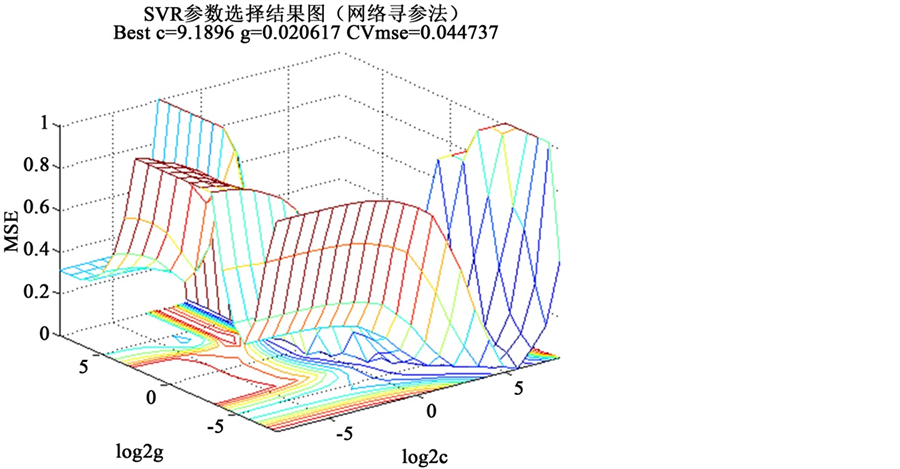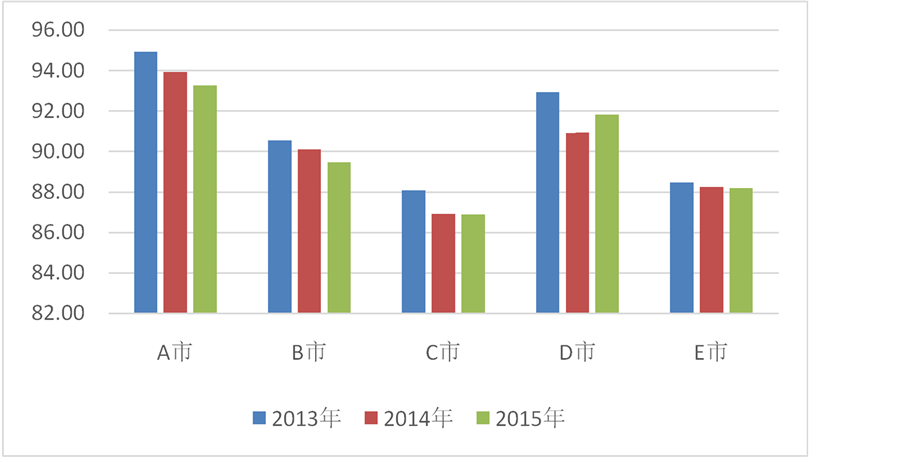1. 引言
面对新的环境,电网企业比以往更加重视其优势,而企业的优势来自于企业能力。关注能力理论的一些学者指出,在快速变化的环境中,企业精心培育的核心能力将出现核心困境 [1] 。企业的核心能力非但不能成为企业的优势,反而制约着企业的发展。核心能力困境主要表现在事后理性、路径依赖和核心能力脆化三方面 [2] 。在此背景下,Teece等最初提出了动态能力的概念,动态能力指企业构建、调整、整合、重构内外部资源与能力的能力 [3] 。随着研究的深入,多数学者认同动态能力是企业持续竞争优势的来源,但对于动态能力的定义出现了一定的差异。Zollo和Winter认为动态能力与组织惯例有着密切联系,是指组织能够在需要时产生或改变经营性惯例 [4] 。Wang和Ahmed认为动态能力是企业不断地整合、再配置、更新和再创造资源和能力的行为导向,它能够利用独特的资源升级并重构核心能力以获得并维持持续竞争优势 [5] 。冯军政认为,对于动态能力的界定大致可以分为两种:一种观点认为动态能力是完成抽象的组织和管理过程的能力,如:机会和威胁感知与识别能力、资源剥离或释放能力、学习能力等;另一种观点则认为动态能力是完成具体的战略和组织过程的能力,如开发新产品和新流程的能力、营销能力等 [6] 。尽管学者们对动态能力的定义不尽相同,但学术界对动态能力理论具有一定的共识。首先,动态能力能够帮助企业应对外部复杂多变的经营环境;其次,动态能力是企业的高阶能力,可以对常规能力进行扩展、改进或重造;最后,动态能力能够通过对企业资源或能力进行重构,从而帮助企业获取较好绩效 [7] 。
由于电网企业的经营环境发生了较大的变化,客观分析电网企业动态能力、评价电网企业动态能力水平成为电网企业战略管理领域的重点。借鉴已有文献,本文认为电网企业的动态能力是指企业根据外部环境的变化,不断地对资源以及能力进行整合、重组,通过技术创新,以安全、高效和清洁方式满足社会电力需求的能力。
本文从电网企业的特性出发,以区域电网企业为研究对象,确定电网企业动态能力维度并建立指标体系。在研究方法上,运用支持向量机对区域电网企业动态能力进行评价。支持向量机对于有限样本有着较强的学习性能,能够评价区域电网企业动态能力水平。动态能力概念对于企业增强应对环境和市场变化具有关键作用。本研究将动态能力概念引入电网企业,关注新环境下区域电网企业动态能力的构成、评价及预测分析,拓展了动态能力评价研究体系,对于电网企业准确把握自身动态能力的状况,提升动态能力水平具有参考意义。
2. 区域电网企业动态能力指标体系构建
基于动态能力理论的电网指标体系的建立,必须确定好电网企业动态能力的维度。目前,动态能力的维度并不统一,学者们将动态能力划分为单维度和多维度。
单维度通常采用动态能力概念,并把动态能力作为一个单维构念来测量。例如,罗仲伟在研究技术范式转变时期动态能力对创新战略的动力支撑机制时,将动态能力视为一个单维构念 [8] 。曾萍在研究环境不确定性、企业战略反应及动态能力关系时同样把动态能力作为一个单维构念 [9] 。
多维度通常将动态能力划分为二维度或三维度以上。以企业具体战略和组织过程为视角,Danneels将营销能力和研发能力作为动态能力,并通过题项对其进行测量 [10] 。吴航将动态能力划分为机会识别和机会利用两种能力,并实证检验了其作用于创新绩效的内在机理 [11] 。随着动态能力理论的发展,学者对动态能力的维度划分日益精细化,大部分将其划分为三维度或四维度。Teece认为动态能力表现为机会感知能力、机会把握能力和资源重构能力,三者之间具有递进演化关系 [12] 。马鸿佳在探索创业能力、动态能力与企业竞争优势的关系时将动态能力划分为环境适应能力、资源整合能力、学习能力。李彬在研究动态能力如何影响组织常规时,认为企业动态能力由三个维度构成,包括感知能力、获取能力和转换能力 [13] 。针对双元型组织的动态能力,焦豪认为可以划分为机会识别能力、整合重构能力、技术和组织柔性能力 [14] 。在研究企业动态能力对绩效的影响机制时,刘刚认为企业动态能力可以从感知能力、学习能力、协调整合能力和创新变革能力四大维度进行测量 [15] 。
构建区域电网企业动态能力的指标体系时,从电网企业特性出发,可从四个维度衡量电网企业的动态能力:电网环境洞察能力、电网技术柔性能力、电网变革更新能力和电网管理柔性能力。电网企业必须依靠环境洞察能力,感知、识别外部环境的变化,运用在技术层和管理层上的柔性适应能力,在变革更新的动力下,进行有效的资源配置、整合及能力提升,以应对企业所面临的不确定性的风险。根据系统性、科学性和可行性的指标选取原则,选取17个区域性电网企业指标作为评价体系的二级指标,见图1。
3. 电网动态能力评价的支持向量机模型
支持向量机(Support Vector Machine, SVM)建立在结构风险最小化而非经验最小化基础上,通过学习有限样本而建立的模型具有很强的泛化能力和推广能力 [16] 。设L个样本的训练样本集 ,
, 为输入变量值,
为输入变量值, 为对应的输出值。通过输入空间的非线性映射
为对应的输出值。通过输入空间的非线性映射 将输入变量值
将输入变量值 映射到高维特征空间,并在此高维空间F中进行线性回归,该方法具有计算简单,它避免了过学习和欠学习以及局部极小等问题。
映射到高维特征空间,并在此高维空间F中进行线性回归,该方法具有计算简单,它避免了过学习和欠学习以及局部极小等问题。
非线性函数设为:
 (1)
(1)
式中:w为权向量,b为阈值。
引入 -损失函数,表示当函数
-损失函数,表示当函数 与样本观测值
与样本观测值 的距离不超过
的距离不超过 时,则认为该点预测值无损失。
时,则认为该点预测值无损失。
 -损失函数定义为:
-损失函数定义为:
 (2)
(2)
为寻求最优回归函数,非线性函数 的回归估计问题转化为一个具有线性不等式约束的二次规划问题,并求得唯一的全局最优解。
的回归估计问题转化为一个具有线性不等式约束的二次规划问题,并求得唯一的全局最优解。

Figure 1. Measure system of regional grid enterprises’ dynamic capabilities
图1. 区域电网企业动态能力指标体系
支持向量机回归的目标函数可表示为:
 (3)
(3)
 (4)
(4)
式中: 为允许的拟合误差;
为允许的拟合误差; 和
和 为松弛因子;
为松弛因子; 为惩罚因子,用于控制对超出误差
为惩罚因子,用于控制对超出误差 的样本的惩罚程度。参数C越大,
的样本的惩罚程度。参数C越大, 越小,则表明训练精度越高,推广能力较差;C越小,
越小,则表明训练精度越高,推广能力较差;C越小, 越大,则得到越高的推广能力。
越大,则得到越高的推广能力。
通过引入拉格朗日因子 和
和 ,构造Lagrange函数,非线性SVR可以转化为对偶二次规划问题。
,构造Lagrange函数,非线性SVR可以转化为对偶二次规划问题。
 (5)
(5)
 (6)
(6)
通过求解,得到非线性回归函数为:
 (7)
(7)
式中: 为核函数。
为核函数。
 表示映射到高维特征空间的内积运算,由于该运算会产生“维数灾难”,通过采用核函数
表示映射到高维特征空间的内积运算,由于该运算会产生“维数灾难”,通过采用核函数 来代替来解决此问题,即
来代替来解决此问题,即 。高斯核函数表现出较强的学习能力,通常选其做为核函数。
。高斯核函数表现出较强的学习能力,通常选其做为核函数。
高斯核函数为:
 (8)
(8)
当采用高斯核函数时,非线性回归函数为:
 (9)
(9)
4. 实证研究
选择某电网公司下属的五个地市级电网公司作为研究对象,以区域电网企业动态能力指标体系为准,将2013~2015年五个地市的指标值作为SVM模型的输入。根据动态能力发展的状况,由专家对2013~2014年五个地市电网公司动态能力进行打分,分数见Y值的1~10项,其作为SVM模型的输出。2013~2015年的五地市的原始数据值分别为表1的1~5项、6~10项、11~15项。
SVM模型将所有样本分为训练集和测试集,1~10项为训练集,11~15项为测试集。通过对训练集2013~2014年的学习构建模型以得到预测集2015年的动态能力分数,即Y值的11~15项。引入 -损失函数对训练集进行训练,经过适应性的学习后,找到支持向量,建立训练模型,得出相应的权值和系数,进而预测2015年五地市的动态能力分数。
-损失函数对训练集进行训练,经过适应性的学习后,找到支持向量,建立训练模型,得出相应的权值和系数,进而预测2015年五地市的动态能力分数。
由于动态能力指标的量纲不同,为保证支持向量机的学习能力,首先对数据归一化到[0,1]区间。然后使用PCA (Principal Component Analysis)进行降维预处理,该方法通过线性变换将原始数据变换为一组各维度线性无关的表示,用于提取数据的主要特征分量。经过变换,样本维数由17维变为7维,结果见图2。
本文选取REF核函数,该核函数预测精度较高,具有很强的学习能力。建立模型,需要确认最佳关键参数g (gamma)和惩罚参数c。采用网格参数寻优方法来获取最优参数,该方法同时搜索c和g达到最优的参数组合,选取c最小的作为最优的参数组合,因为c值越大会发生过学习现象,使得预测准确率降低,最终c为9.1896,g为0.0206,参数优化结果见图3。
对参数寻优后,对训练集进行回归预测。建立的Model模型支持向量共10个,对应有10个支持向量权重,b值:−0.7876。因而SVM动态能力评价模型为:


Table 1. Five cities’ dynamic capability index value in 2013-2015
表1. 2013~2015年五地市动态能力指标值
支持向量机对训练集进行学习结果显示MSE = 0.00628,相关系数 = 0.94。专家评分和SVM预测结果的相对误差较小,说明SVM模型对于区域电网企业动态能力评价是可行的。训练集拟合结果见表2。
最后,用建立的SVM动态能力评价模型对测试集进行预测,得出2015年五地市的动态能力分数,见图4。

Figure 2. The result of dimension reduction
图2. 降维结果

Figure 3. The result of parameter optimization
图3. 参数优化结果
如图5所示,在2013~2015年,A市的动态能力分数终保持第一,而C市的动态能力分数始终处在最低。观察动态能力指标发现,A市有7个指标值处在第一,分别是:10千伏人均配变容量、110千伏主变N-1通过率、市辖10千伏互联率、市辖10千伏电缆化率、单位电网资产供电负荷、10千伏及以下配网线损率和单位电量输配电成本。A市将近一半的指标表现优异,说明该市在环境洞察、变革更新、技术和管理方面有着较强的能力。

Table 2. Fitting result of train set
表2. 训练集拟合结果

Figure 4. Curve: five cities’ dynamic capability scores in 2015
图4. 2015年五地市动态能力分数
C市的动态能力分数最低是由8个问题指标导致的,分别是:220千伏单位电网支撑等效装机、10千伏人均配变容量、市辖10千伏互联率、市辖10千伏电缆化率、单位电网资产供电负荷、单位电网资产售电量、10千伏及以下配网线损率和单位电量输配电成本。上述指标值较不理想,220千伏单位电网支撑等效装机指标反映了电网对电源的支撑能力,该指标值在三年中均超过了1,说明线路无法满足现有规模的装机容量,导致电力无法有效送出,造成了资源浪费。10千伏及以下配网线损率一直处于8%左右,明显高于其他地市的线损率,C市应当通过管理和技术措施不断降低线损率。由于该市供电半径较大,市辖10千伏互联率三年平均值仅为19.67%。

Figure 5. Five cities’ dynamic capability scores in 2013-2015
图5. 2013~2015年五地市动态能力分数
近年来,D市和E市单位电网投资增供负荷、单位电网投资增售电量这两个指标不乐观,投资项目带来的效益有所下降,今后两地市电网公司应当科学安排投资项目,做好投资决策工作。此外,E市的电缆化率低,仅为3%左右,该市应当加强电网规划和电缆化改造工程,保证城市电网的可靠性及传输能力。
在2013~2015年,A市、B市和C市的动态能力分数均呈明显下降趋势。这三市共有4个指标表现越来越差,分别是:单位电网资产售电量、10千伏及以下配网线损率、单位电量输配电成本和每万元电网资产运行维护费。其中,A市、B市和C市的单位电量输配电成本和每万元电网资产运行维护费每年都在增加,表明这三个地市都需要加强成本管理和控制,促使电网成本合理化。
通过五地市数据可知,在2013~2015年,以水电、风电和光伏为主的可再生能源上网电量均保持稳定的增长,可以预见未来区域电网企业发展清洁能源还有相当大的提升空间。巴黎气候变化大会和全球能源互联网发展为清洁能源的发展带来了契机。电网企业应当承担奉献清洁能源的使命,积极开发清洁能源技术,加大输送清洁能源的能力,推动以清洁和绿色方式满足电力需求,实现清洁能源快速健康发展。
5. 结论
本文在界定电网企业动态能力定义的基础上,根据对电网企业动态能力进行剖析后,将电网企业动态能力维度划分为四维:电网环境洞察能力、电网技术柔性能力、电网变革更新能力和电网管理柔性能力。在此基础上,对电网企业动态能力进一步量化,以区域电网企业为评价对象构建了电网企业动态能力评价指标体系。
针对评价对象是有限的情况,采用支持向量机模型进行评价。实证结果表明:某区域内电网企业的动态能力水平各不相同,并且近年来该区域内电网企业的动态能力有明显下降趋势。电网企业管理者应当客观分析和评价电网企业动态能力水平和趋势,不断提升电网企业在环境洞察、变革更新、技术柔性和管理柔性方面的能力。
本研究阐述了动态能力概念,对其机制的分析尚停留在理论层面。今后,本研究应结合电网企业动态能力的特性,对动态能力形成和演化做出更进一步的探索。此外,随着电网企业内外部环境的不断变化发展,应对区域电网企业动态能力指标体系理应做出丰富与完善。